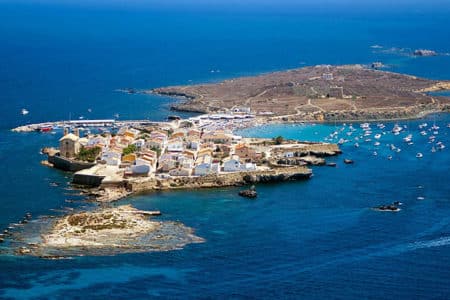The Amigos de los Humedales del Sur de Alicante (AHSA) has registered a letter of allegations before the Provincial Coastal Service, promoted by the Ministry of Ecological Transition, regarding mooring buoy fields in the Tabarca marine reserve.
According to the environmentalists in their letter, “after positively assessing the decision to install mooring fields in order to avoid the negative impact of uncontrolled anchoring on the seagrass meadows of Tabarca, the conservationists warn of the excessive number of buoys that are intended to be implanted, totalling 121, 35 in the southern zone and 86 in the northern zone”.
In AHSA’s opinion, this is a disproportionate number of anchorage points for a marine reserve and a Natura 2000 Network space that is extremely fragile in the face of the overcrowding situations that it unfortunately suffers every year during the summer period.
The environmentalists point out that the number of anchorage points in other marine reserves and protected marine areas in the Spanish Mediterranean should be taken into account: 16 in Illes Columbretes (Castellón), 20 in Cabo Tiñoso (Murcia Region), 32 in Sa Dragonera (Mallorca) and 50 in the Cabrera Maritime-Terrestrial National Park.
They also recall that a previous project from 2002 provided for a total of 20 anchorage points (13 in the southern area and 7 in the northern area), which is now intended to be multiplied by six. For all these reasons, they propose that the number of buoys be between 35 and 50.
In another of their allegations, they criticise that alternatives regarding the number of anchorage points are not analysed and that the project is not submitted to an environmental impact assessment, since the environmental impact of regulated anchorage will not be the same if 121 or 35 are installed.
Since with 121 points -the ecologists continue- the risk of unwanted discharges increases, the turbidity of the water increases during the anchor installation operations, or the areas of the reserve destined for anchoring are overcrowded, among other impacts.
For this reason, they request that the project be submitted to an environmental impact assessment, so that different alternatives related to the number of anchoring points are analysed (for example, three alternatives with 35, 50 and 121 points), alternatives that they also consider should be evaluated in the study of effects on the Natura 2000 Network, of which Tabarca is a part as ZEPA and LIC.
They also mention the negative landscape impact that the overcrowding of boats entails from the observation points located both on the land side of the island (beach, perimeter path of the Campo, walls of the historic centre) and in the marine environment of the two anchoring areas (from boats in passage). Thus, they ask that a landscape integration study be drawn up and exposed to the public.
Finally, AHSA denounces a certain lack of rigor in the project when dealing with the island’s birds, one of whose main species, the European Storm-petrel, is even said to be a bird of passage when it is well known that it is a nesting species in Tabarca and its islets.
They demand that their status as a bird of passage be rectified and they encourage the drafters of the project to consult the book The Birds of the Island of Tabarca”, edited by AHSA in 2006.





